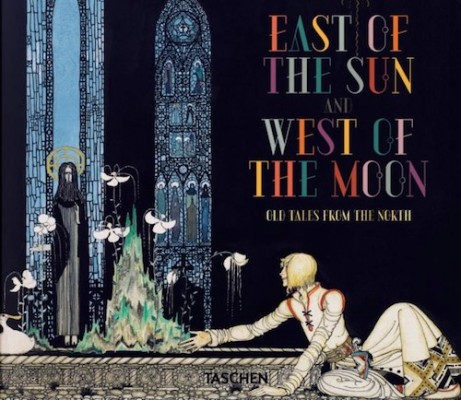NEW YORK (CNS) — Readers are in danger of being spoiled by “East of the Sun and West of the Moon” (Taschen).
The art in this gorgeous volume of Norwegian folk tales is so brilliant that appreciating ordinary books afterward may prove a difficult task.
With a publishing history that traces back to 1841, the text is the work of folklorists Peter Christen Asbjornsen (1812-1885) and Jorgen Moe (1813-1882). Patterning themselves after the Brothers Grimm, Asbjornsen, a zoologist, and Moe, a future Lutheran bishop, sought to preserve — and popularize — the traditional narratives of their native land, just as their role models had done in Germany.
In 1914, a London publishing house hired Danish artist Kay Nielsen (a man) to illustrate a new version of “East o’ the Sun and West o’ the Moon,” George Webbe Dasent’s translation of Asbjornsen and Moe’s tales, the first edition of which had appeared four years earlier. Nielsen’s illustrations became landmarks in the genre.

Taschen has now reissued the book with lavish reproductions of Nielsen’s art as well as a new preface and introduction.
Nielsen is probably best known to modern audiences for “Night on Bald Mountain,” the segment he created for the 1940 Disney film “Fantasia.” His influences ranged from Japanese woodcuts and British Art Nouveau pioneer (and Catholic convert) Aubrey Beardsley to the innovative design style of Sergei Diaghilev’s Ballets Russes.
The illustrations in “East of the Sun” are so finely rendered and rich in detail that they can be examined for hours. Heroic figures, trees and the earth itself are elongated, driving up in narrow shafts toward the sky like great waves.
Nielsen’s contribution to the volume is a stunning achievement that could serve as a wellspring of inspiration for artists of all ages. In fact, Nielsen’s skill makes the work of even his best modern counterparts seem lacking.
Still, parents should be aware that folk tales tend to be much more intense than the general run of children’s literature today. Thus “East of the Sun” is not only fueled by magic, and populated by princesses. It also includes themes of betrayal, abduction and the fundamental struggle of good against evil.
There’s an element of the grotesque in the title story, for example, which tells of a young woman’s greed-motivated marriage to a white bear. In an echo of “Beauty and the Beast,” the bear turns out to be a prince by night.
Another story, “Soria Moria Castle,” is a cautionary tale: A poor couple’s son gains wealth on an adventure but nearly loses everything when he ill-advisedly flaunts his good fortune.
Catholic readers may be pleasantly surprised by “The Lassie and Her Godmother.” In this spiritually rich parable, a young mother temporarily loses her three children, only to discover that, during their absence, they have been in the care of Mary. Nielsen renders Mary gorgeously, adorning her with an orange halo as she stands atop a blue cloud.
Together with challenging subject matter and a somewhat demanding reading level, the book, though free of blood, does include a single instance of tastefully portrayed female nudity.
Mature themes and images. The Catholic News Service classification is A-II — adults and adolescents. Not otherwise rated.






















